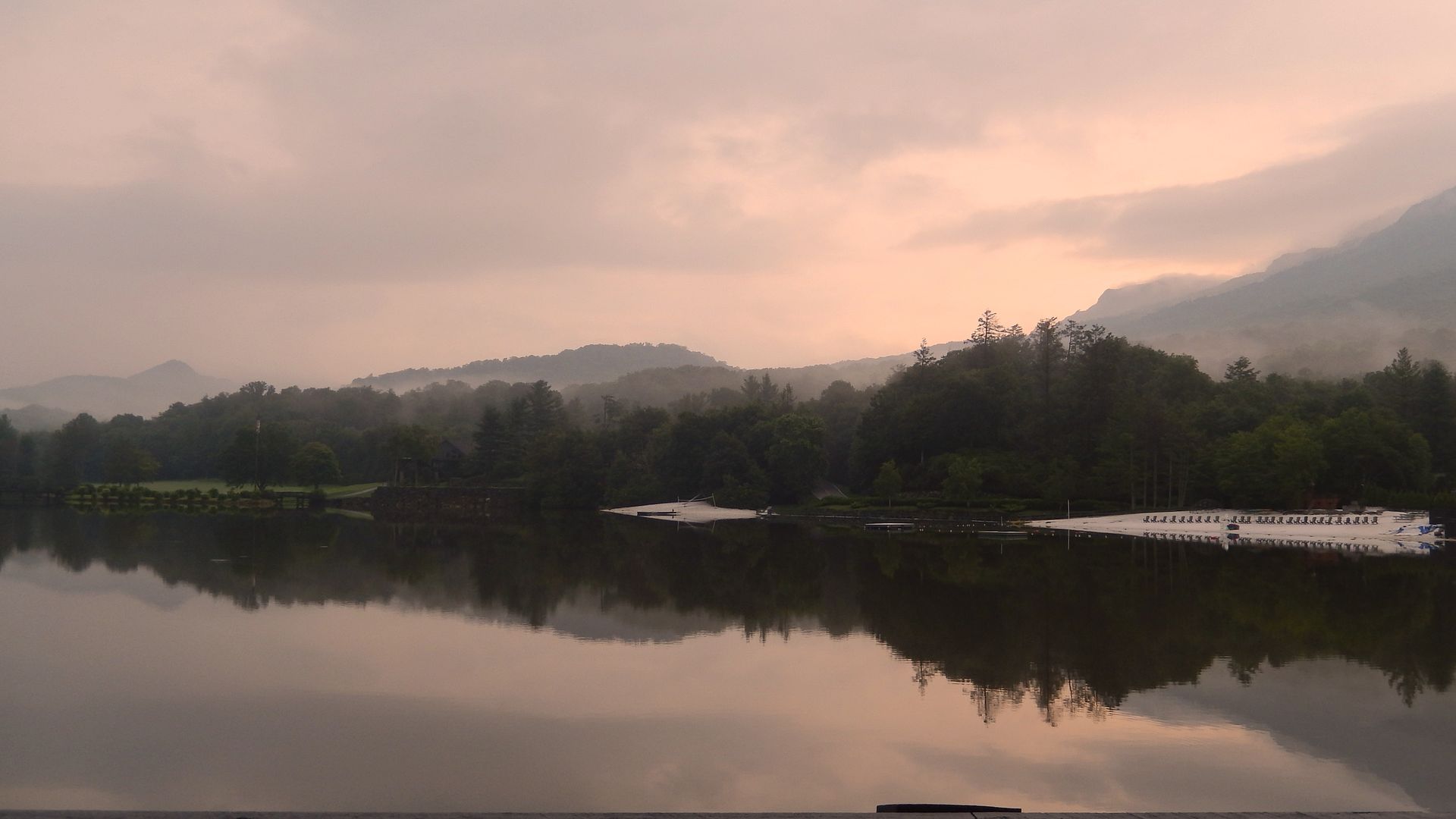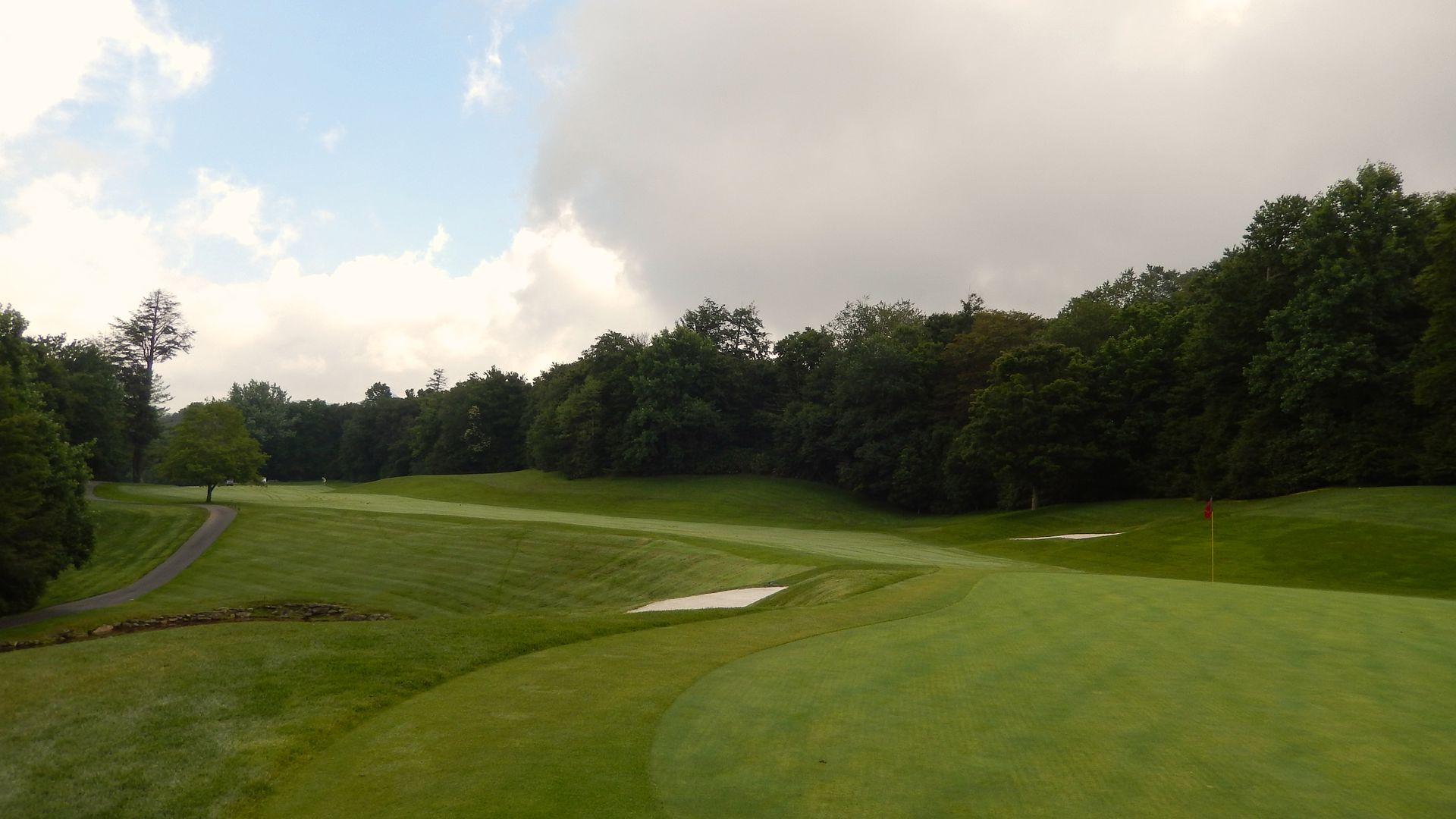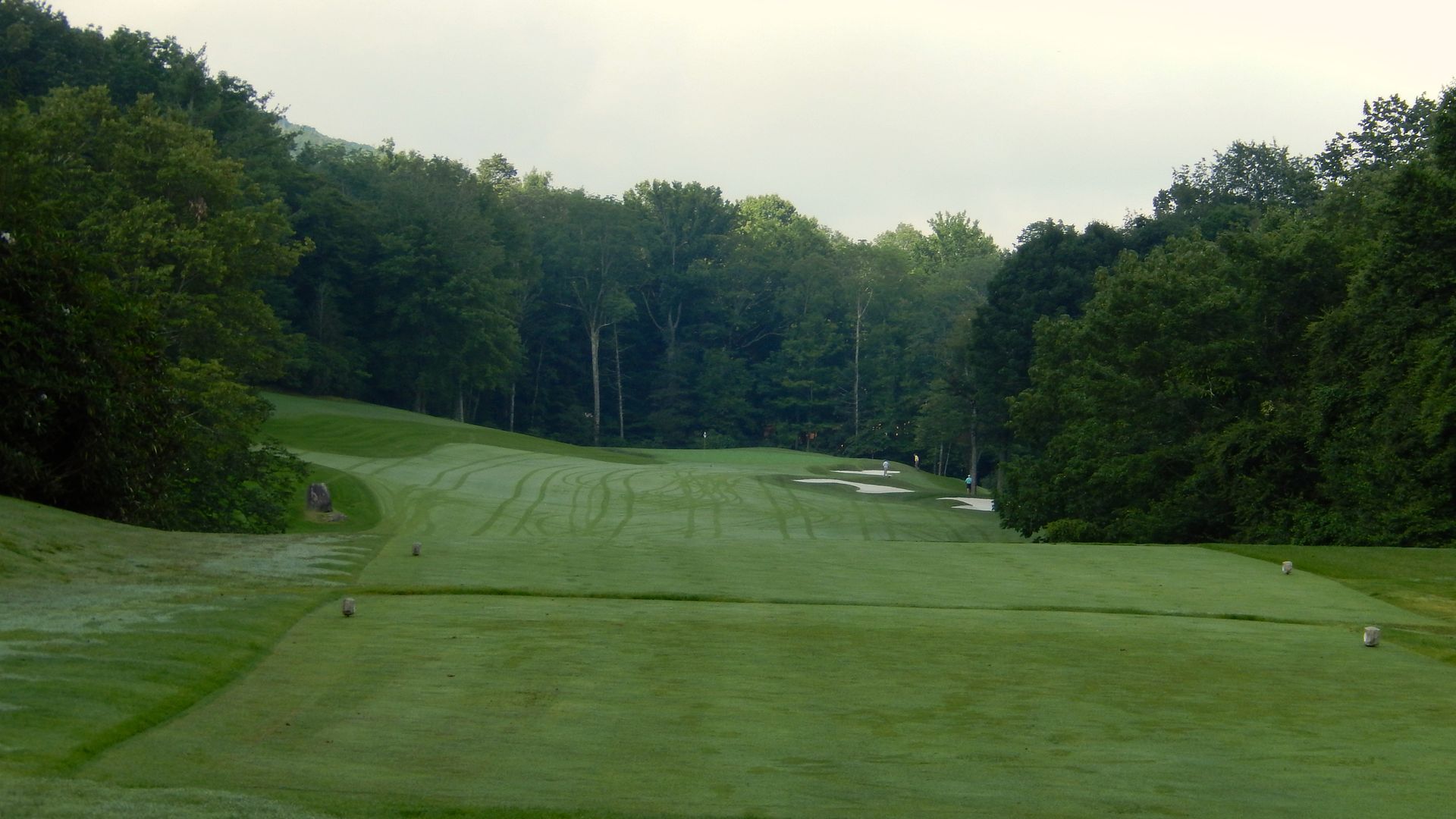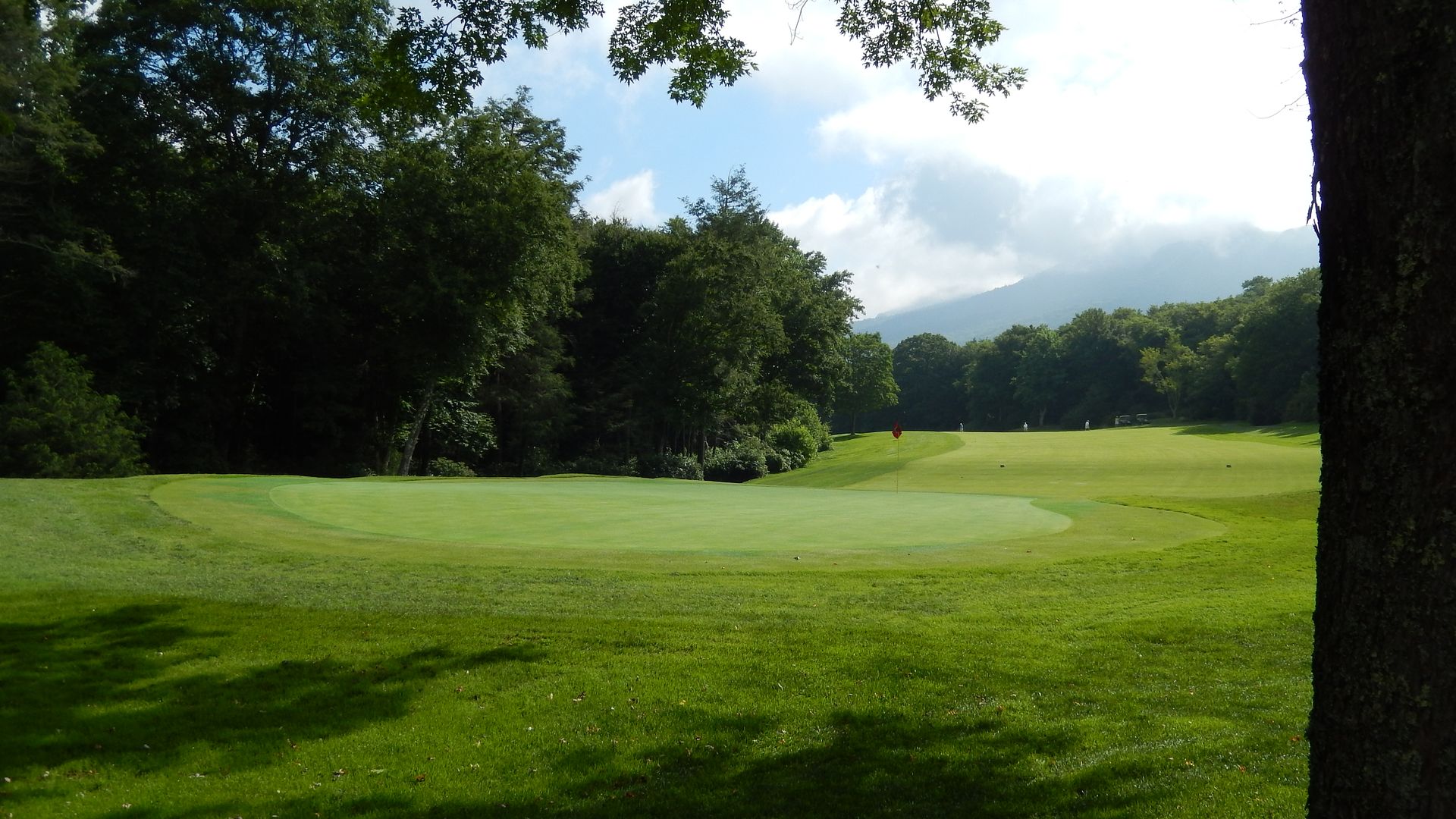
Grandfather opens with a mid-length par-5 and a daunting first tee shot. A narrow corridor is made narrower by a pair of flanking trees that flank and overhang the edges of the fairway. The second shot is played over or around a chasm that drops into a water hazard below. Challenging the neck of fairway alongside the drop-off leaves a much simpler angle into this angled green.

The second is a downhill par-4 of a little under 400 yards. The preferred approach is from near the fairway bunkers, but the tilt of the fairway will allow the golfer to play away from the trouble and still leave an ideal angle.

The reverse-cambre 3rd is very similar to the Olympic Club's 4th hole. A tee shot down the left is needed to keep the ball from bounding into trouble on the right. Though it may not look particularly challenging, when combined with the extremely back-left to front-right sloping green, the third hole is the most difficult hole on the course.

The demanding and stunning 460 yard par-4 4th must be a favourite of many. This up and over hole bends gently to the right and seemingly offers the golfer the opportunity to run the ball onto the green -- but a counterslope just short of the green perhaps shows Maples' dislike for the running approach.

An excellent match for the redan 9th, though some may criticize their similarity in lengths, the shot requirements at the opening pair of par-3s could not be more different. To me, this is the true test of design variety, not just ticking boxes by varying yardages, but by having the golfer think more about the type of shot he is going to hit than the yardage of the shot.

The 6th is a sharply legging par-5 that twice crosses a well-used stream. The 7th must be credited to the Club's founder as much as it is credited to Maples as it was always her intention to have the mountain used as a backdrop. While the tee shot is simple, perhaps allowing the golfer to enjoy the setting for a moment, the raised green angles from left to right and falls off in the rear to make a considerable challenge.

The 370 yard 8th is both stunning and thought provoking. Does the golfer hit less than driver from the tee, playing to the width of the fairway, to leave a 150 yard approach from a flat lie. Or does the golfer try to play into the hill and the neck of fairway?


We all know the strategy of a redan hole, and this is an excellent one. While the golfer is offered ample room to bail-out to the right, the pitch from there which is down the slope of the green and toward the water hazard, is frightening.
